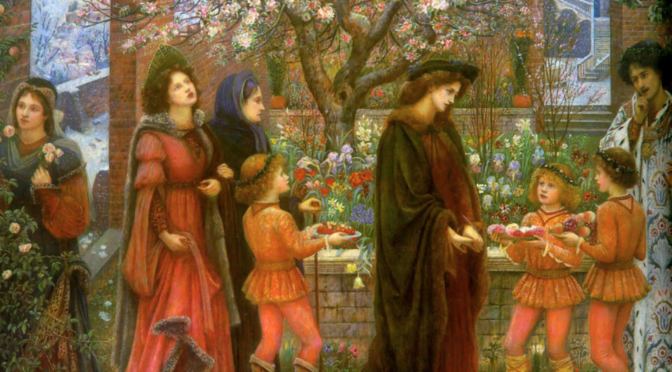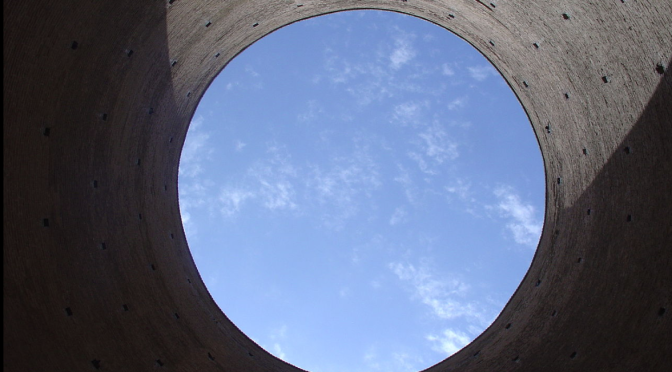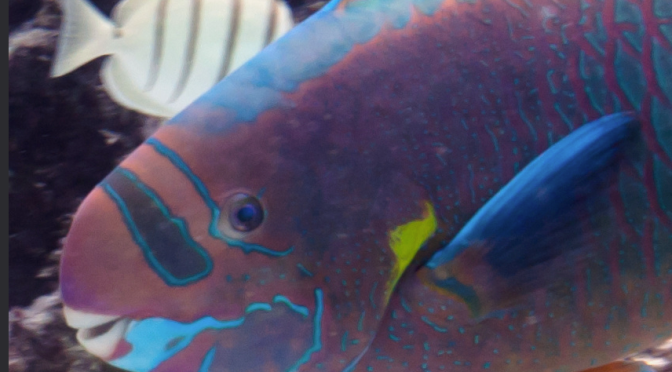Category Archives: Sustainability
New video: How Will a Hawaii Bamboo Industry Bring SECURITY to Our Future Generations?
New video: NexTech Hawaii is Changing the Game for STEM Education!
NEW VIDEO: How Hawaii Island can achieve sustainable agriculture — Troy Keolanui of O.K. Farms
Pacific Biodiesel: Is Keaau Plant Actually Sustainable?
Pacific Biodiesel in Kea‘au has just been certified sustainable – the first biodiesel plant in the U.S. to be granted such a certificate – and that’s significant.
The plant opened using primarily waste cooking oil, and that cooking oil has been financing the plant. Now, it’s built. We don’t have to grow, say, palm trees and try to utilize the palm oil to build a plant and make that work out. The plant is already up and running.
All we need to do now is supply a product, whatever it may be. This gives us the opportunity to bring in other products and try them out as biofuels.
This is great news.
From the New York Times:
Biofuels Plant in Hawaii Is First to Be Certified as Sustainable
KEAAU, Hawaii — The trucks roll in and out of the plant at a business park nestled near papaya farms and a forest preserve on the Big Island here, an operation that transforms waste cooking oils, animal fats, fruit and seeds into biodiesel fuel, nearly 13,000 gallons a day.
Owned by Pacific Biodiesel, an industry pioneer, the plant was designed with an eye toward conserving water and energy and avoiding environmental harm.
But after about $20 million and four years of operation, a central question about the plant, and the industry as a whole, has persisted: Do biofuels ultimately reduce carbon emissions?
“We’re worried that the efforts to ramp up our use of biofuels are actually doing a lot of damage and digging the climate hole deeper,” said Jonathan Lewis, a lawyer focused on climate change at the Clean Air Task Force.
Now, the biodiesel industry’s backers say they have an answer, at least for this modest plant….
Farming Fantasies
Honolulu Star-Advertiser columnist Lee Cataluna mentioned Hamakua Springs in her column yesterday.
Farming inspires fantasies but requires viable funding
by Lee Cataluna
One artist’s rendition of Maui’s future shows golden fields of watercolor crops stretching from the central plains all the way up to the foothills of the West Maui mountains. The houses and buildings and highways that already exist aren’t quite there in the imagined future, blurred out like an aspirational ad.
That’s an image from the Maui Tomorrow report, which is different from the plan by Community Organic Farmland Initiative. An artist’s rendering for that plan shows blond children climbing fruit trees, a woman in a blue dress cradling a harvest of leaves in her arms, surfboards, happy turtles and a rainbow stretching across a houseless, building-less Central Maui. Next to that childlike image is a depiction of the alternative: farmers in hazmat suits, a helicopter spraying poison over dusty fields, ugly condos and factories looming in the distance.
The fantasies are darling. The reality, though, is that precious little former sugar land in Hawaii has successfully been diversified for other crops, and it’s not for lack of trying….
She writes about how we need funding for farmers and farming. She’s right. Farming is tough. It’s serious business, not for the faint of heart or of dreams of apple pie and haupia all day long.
But if one is determined, uses modern scientific methods and keeps track of the pluses and minuses, it can be very rewarding and even profitable under specific conditions.
Farmers, Friends & Comedians
Have a look at the new Farmers & Friends magazine. Its tagline is always “Agriculture, natural resources, energy, livelihoods, markets, opportunities and civil society in Hawai‘i.” That pretty much covers everything.
Editor Rory Flynn’s column this issue is called “Our Ketchup Bottle Problem.” It’s about Hawai‘i’s outmigration, and it starts:
Not so long ago, ketchup was packaged in clear glass bottles. You could always tell how much ketchup was left in the bottle and that came in handy, especially at restaurants and diners. Customer and waitress alike knew when it was time to bring out a fresh ketchup bottle.
Then ketchup makers switched to squat plastic bottles and, in lieu of visible ketchup, they colored the plastic bottles red. Now you have to give the plastic bottle a squeeze or feel its heft to determine if there‘s any ketchup inside. That pretty much sums up Hawai‘i‘s shaky grasp of population and economic growth these days….
This month’s feature stories include “Study reveals the changing face of agriculture in Hawai‘i,” about the 100-page State Agricultural Land Use Baseline 2015 report. From the article:
The study team was led by Jeff Melrose, a land use planner and a seasoned observer of Hawai‘i‘s agricultural landscape.
Melrose‘s team used a combination of satellite imagery, related geospatial datasets, and on-site farm interviews to produce a new digital GIS layer showing where commercial agricultural crops are grown throughout the State of Hawai‘i. The new baseline dataset updates Hawai‘i‘s previous Agricultural Land Use Map (ALUM, 1980) produced 35 years ago.
Other articles include “Thoughts on biotechnology,” “Algae + papaya = biofuel,” by Jan Suszkiw,” and “Growing up with Mort, Mike and Elaine.”
That last one is about the comedians Mort Sahl, Mike Nichols and Elaine May, by the way. Fun stuff.
It’s a great issue and I highly recommend having a look. Here’s a link.
Sustainability: A Full Circle
I’m looking back at the long, sustainability story of our farm and I see that we have come full circle.
When we started out, the objective was to farm and then, with the proceeds, eventually own land. At the time, we didn’t have any money and there wasn’t any land available, it was before the sugar plantations closed down, but we just kept on going and that was always our objective: to own land.
It’s what made us adapt and make change happen, all along the way, so we’d always be in the position we needed to be in 10 years later. We have always been comfortable with change, and it’s easy for us now. We like it and it’s a part of who we are.
The main reason we shut down the farm is that we saw what was coming. We knew the cost of farming was rising, rising, rising, and that in order to survive, at some point we would have to start cutting our employees’ pay and benefits.
The rise in farming costs was happening for external reasons, not due to any fault of our own. We were doing the best we could for our workers, but as hard as we’d tried over the years, we knew that eventually we’d be looked at as the bad guy for having to make cuts. And we didn’t want that. It just wasn’t an option to let ourselves get into that situation. That had a lot to do with why we closed the farm.
While we were in the process of closing down, this medical marijuana option came up. One of the most important conditions I placed on getting involved in applying for a medical marijuana license was that my workers get first shot at the new jobs.
So now, 30 years later, here we are. We own land, and though we shut down the banana operation, we still have a lot going on. It’s not like one day we closed and rode off into the sunset. It’s not the end, but a transition.
I want to make sure we are using the soil and land in a sustainable way. We have already signed leases with farmers to do some crop rotation. What we want to do is run one crop, then follow it with another crop and then possibly a third, and keep that going.
Once you get into that rotation, it’s sustainable. You’re not decreasing your soil. You rarely see that in Hawai‘i, though, for many reasons. If your business scale isn’t big enough to rotate, and if your market is not large enough, you cannot rotate your crops. But I can do this because we own the land.
If you’re trying to squeeze every last penny out of a deal, it might not be the most efficient move. In the long run it is, though, because it’s sustainable farming.
We did something different for our last banana harvest. Instead of leaving all the tall banana bunches, we used cane knives during the last harvest and chopped them all down. So by the time we got to the very last one, they were all down. We just harvested our last bananas about two or three weeks ago, and we already have the sweet potato farmer in there preparing the land.
We didn’t have to cut down the banana bunches like that. We could have just left them, because the lease says, “as is.” But it allowed us to keep our people employed as long as possible. They wanted to work until the last day, instead of leaving and getting unemployment. Shoot, you want to work? I’ll pay you.
It turns out we did a lot of work we could have left for, and passed onto, the next company, but I did that deliberately. I did it both to employ my workers as long as possible and also because now it’s easier for the new farmers to come in and start their rotation. There’s less material that needs to deteriorate. It’s about getting to a point so when we transition to the rotating crops, it’s continuous.
Full circle, but not the end.
“Yoohoo! I’m Looking for an Uhu!”
Photo courtesy of Lindsey Kramer/U.S. Fish and Wildlife Service
Recently I heard Suzanne Case of the Department of Land and Natural Resources speak about overfishing here in Hawai‘i, and what she said really rang a bell with me.
When I was growing up, my family lived on the ocean at Maku‘u. I can remember my Uncle Sonny being very concerned about not overfishing. I can really identify with concern about ocean resources.
When I was in Vietnam, I saw a school once of maybe 30 or 40 uhu, huge ones, ten-pounders. But in Hawai‘i, I only ever saw one or two at a time and I had no idea they swam in schools like that. So when I saw that big school in Vietnam I thought it must be a different species.
But Suzanne had a photo of a school of uhu just like that and she said that was their normal condition. I almost fell over. The consequences of overfishing became very clear to me.
It was fascinating to learn that some of our local communities are saying enough is enough and that they have to do something. Leslie Lang talked to Suzanne and found out more:
***
Our ocean fisheries have declined 75 percent over the last hundred years, says Suzanne Case, chair of the Department of Land and Natural Resources.
In the past, Hawai‘i’s natural resources were controlled by kapu when we had the ahupua‘a system, but that sort of protection is long gone.
Today, some community groups are stepping forward to restrict fishing in their local waters in order to rebuild dwindling marine populations.
A community group in Ha‘ena, Kaua‘i was the first group to pass a set of community-based subsistence fishing rules. That was last summer, after they worked on developing the rules for 16 years.
The result is a co-management process with the state. “The state has to enforce the rules,” says Case. “The local community cannot go out and be vigilantes.”
She explained that they are switching to traditional fishing practices. “So that means no monofilament nets, one pole and line fishing, and you can’t fish during spawning aggregation. All of this means you fish more carefully, as opposed to you just go out and wipe out a whole school of uhu or weke because you can.”
Now Ka‘upulehu, in west Hawai‘i, is working on a similar process. “They’re talking about a closure – no fishing out to 20 fathoms for ten years,” says Case. “And the community, as far as I know, has committed not only to not fishing there, but to not displace their fishing efforts by going elsewhere. They’re serious about it.”
There was a formal public rulemaking hearing about this last Thursday.
The Ka‘upulehu Marine Life Advisory Council, formed in 1995, consists primarily of lineal descendants of people who go way back in the community. “There’s a lot of inherited local knowledge,” says Case.
The Council has also created a program called Makai Watch, which determined what to look for, who to call for enforcement if needed, and how to provide outreach to people who are users of the area in the first place, so they know the area’s rules.
These sorts of community-based action are happening elsewhere, too. Case says a Kipahulu, Maui group has imposed a voluntary three-year ‘opihi rest area. “They’re trying to get one of their key ‘opihi grounds that has been overfished to recover. They’re trying to let the remaining ‘opihi get big and have lots of babies. They’re not even waiting for state legislation – they put a voluntary ban in place. It’s not legally enforceable, but you want to respect it.”
In the old days, of course, natural resources were protected by the ahupua‘a system. “The ahupua‘a boundaries extended out beyond the reef,” she says, “so that included the estuaries and the fishponds and the near shore environment, and the reef and the outer reef, and then out into the deep, as well as the mauka to makai part. We had a pretty large population, with fish being a major source of protein.”
The ahupua‘a system worked. “It sustained the population,” she says. “Back in 1839, Kamehameha the Third codified the local control into law, and the konohiki had the right to put kapu on fish, or make some off-limits during the season, or the like. In the Mahele, those were actually identified as property rights.”
But then the system changed.
“In the overthrow, when Hawai‘i became a territory, the Organic Act of Hawai‘i in 1900 implemented full open access to fisheries, and there were a series of laws to codify the private ownership and konohiki rights and responsibilities for managing fisheries,” she says.
“The Organic Act provided that if you had a private property fishing right, you could register it but then the Territory could condemn it. So it was a very intentional act to total open-access to fisheries.”
Fast forward to the 21st century, when we are much more efficient – and less sustainable – at fishing. We can get into deeper water, stay down longer, and GPS allows us to find big schools of fish.
“With the loss of local knowledge, too,” she says, “you may lose some very important elements, such as when certain fish spawn so you don’t fish during the spawning seasons. And how big fish are when they finally reach reproductive size.”
She points out that older, bigger fish are far more fertile than those just barely of reproductive size. “Unfortunately, we like to fish the big fish, which are by far the most productive. For instance, six-inch weke only spawn once a year and produce 90,000 eggs,” she says. Compare that to a twelve-inch weke that spawns four or five times a year, producing 45 million eggs each time. That’s 180 million eggs per year, instead of 90 thousand.
“So what we need to do to improve our fisheries is find ways to let the fish get bigger,” she says. “So that could be with the right kind of legislation, for a minimum catch size but also a maximum catch size so they can grow big in protected areas and spill over into the adjacent areas and help those areas restore their fisheries.”
But legislation takes time, and also depends on cooperation from the community. This is what’s happening in communities around Hawai‘i, as well as throughout the Pacific.
“The goal is to have fisheries rebound so there’s more fish for people to fish,” she says. “That’s the shared long-term goal and it requires a long-term commitment, not just short-term gain.”
Win an Agricultural Lease and Farm Start-Up Money
The Mahi‘ai Match-Up 2016 is coming up. I was a judge for one of the Match-ups before. It’s a good program.
Here’s how Kamehameha explains it:
At Kamehameha Schools, we partner with the community to work toward a sustainable Hawaiʻi by supporting the local farm industry and increasing food production here on our islands. We are proud to once again team up with Pauahi Foundation to present the:
Agricultural Business Plan Contest
Submit your agricultural business plan by February 29, 2016 for a chance to win an agricultural lease* from Kamehameha Schools and start-up money from Pauahi Foundation. First place winner receives $20,000 and second place prize is $15,000. The competition is open to farmers, aspiring farmers and other agricultural producers including ranching, fishery and nursery proprietors.
To apply or for more information, visit www.pauahi.org/mahiaimatchup.





